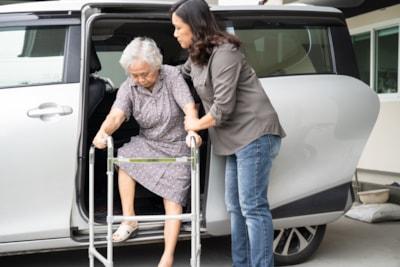Embracing Independence: Understanding Aging-In-Place and Strategies for Achieving It
As the population continues to age, many individuals express a desire to remain in the comfort of their own homes as they grow older. This concept, known as aging-in-place, has gained popularity in recent years as families seek alternatives to traditional assisted living facilities. But what exactly does aging-in-place entail, and how can individuals and their loved ones achieve this goal? In this blog post, we'll explore the concept of aging-in-place and discuss strategies for making it a reality.
Understanding Aging-In-Place
Aging-in-place refers to the ability of individuals to live independently and comfortably in their own homes as they age, with access to the necessary support and resources to maintain their quality of life. This approach emphasizes autonomy, dignity, and the preservation of familiar surroundings, allowing seniors to remain connected to their communities and cherished memories.
Strategies for Achieving Aging-In-Place
 Home Modifications: Making modifications to the home environment is essential for ensuring safety and accessibility as individuals age. This may include installing grab bars in bathrooms, widening doorways for wheelchair access, adding ramps or stairlifts, and improving lighting throughout the home. These modifications can enhance mobility and reduce the risk of accidents or falls.
Home Modifications: Making modifications to the home environment is essential for ensuring safety and accessibility as individuals age. This may include installing grab bars in bathrooms, widening doorways for wheelchair access, adding ramps or stairlifts, and improving lighting throughout the home. These modifications can enhance mobility and reduce the risk of accidents or falls.
Technology Integration: Embracing technology can empower seniors to live independently while staying connected to their loved ones and accessing essential services. Smart home devices, such as voice-controlled assistants, remote monitoring systems, and medication reminders, can help seniors manage daily tasks and stay safe at home. Telehealth services also enable seniors to receive medical care from the comfort of their own homes, reducing the need for frequent trips to the doctor's office.
Supportive Services: Engaging the support of professional caregivers, home health aides, or geriatric care managers can provide seniors with the assistance they need to age-in-place successfully. These professionals, or in-home caregivers, can help with activities of daily living, medication management, transportation, and companionship. By tailoring services to individual needs, seniors can receive the support necessary to maintain their independence and well-being.
Community Resources: Connecting with community resources and support networks can enrich seniors' lives and enhance their ability to age-in-place. Local senior centers, meal delivery programs, transportation services, and volunteer organizations offer valuable resources and social opportunities. Participating in community activities and events can help seniors stay engaged, active, and connected to their peers.
Financial Planning: Planning for long-term care needs and financial security is crucial for successful aging-in-place. Seniors and their families should explore options for financing home modifications, supportive services, and healthcare expenses. Long-term care insurance, Medicaid waivers, and veteran's benefits may provide financial assistance for aging-in-place services.
 Conclusion
Conclusion
Aging-in-place offers seniors the opportunity to maintain independence, dignity, and quality of life in the comfort of their own homes as they age. By implementing home modifications, integrating technology, accessing supportive, in-home senior care services, connecting with community resources, and engaging in financial planning, individuals and their loved ones can create a supportive environment conducive to successful aging-in-place. Embracing these strategies empowers seniors to live life on their own terms, surrounded by the people and memories they cherish most.
Explore Options For Aging In Place In Indianapolis
Want to learn more? Contact us today for a free consultation.
